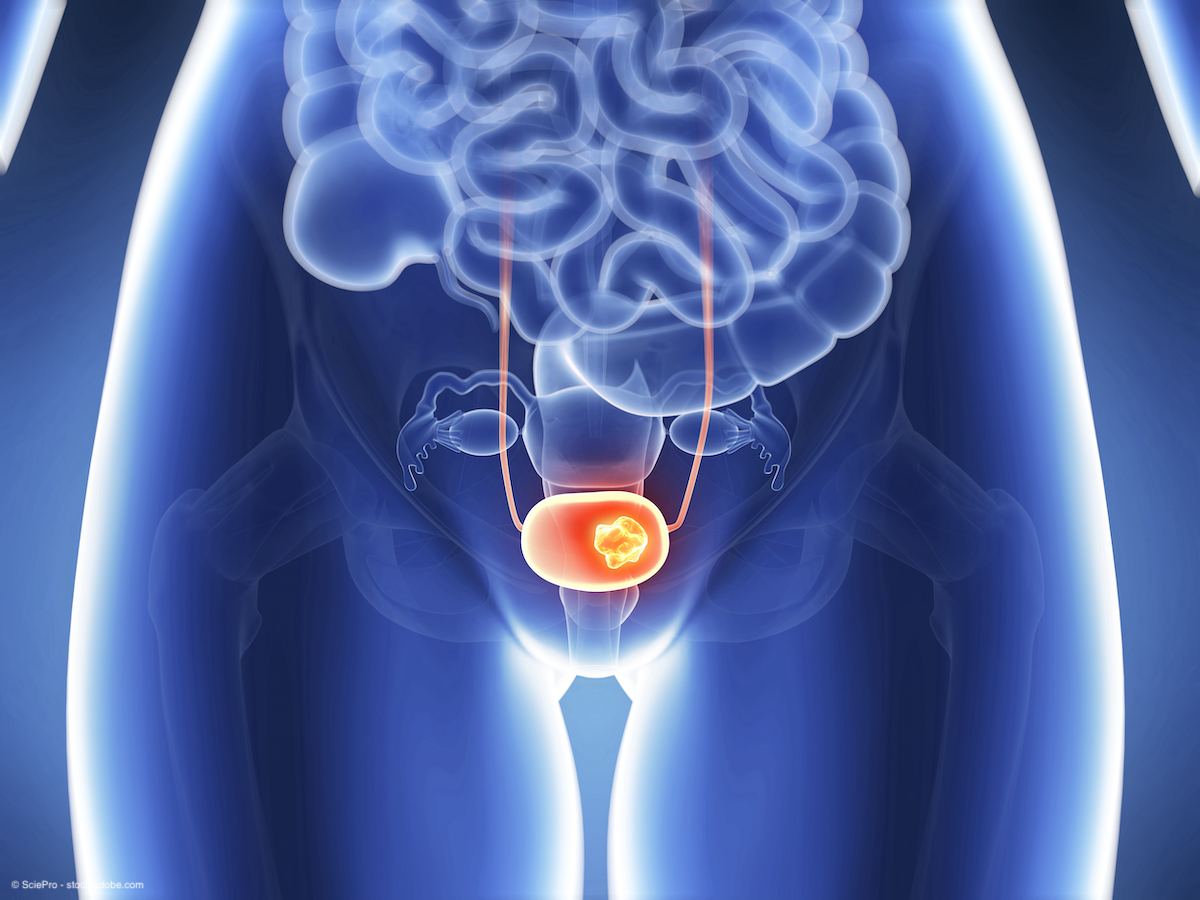Article
FAP-PET imaging shows promise in bladder cancer
Author(s):
“The benefits of FAP-PET imaging include the higher specificity compared to conventional imaging. There's also the potential for upstaging,” said Domenique Escobar, MD.
68Ga-FAP-2286 PET imaging showed higher specificity than conventional imaging and FDG-PET in patients with bladder cancer and has the potential to change treatment selection, according to a pilot study presented during the 2023 AUA Annual Meeting.1
“FAP-PET has the potential to change treatment pathways and improve patient care by ensuring that patients are accurately staged, and therefore, accurately treated,” said Domenique Escobar, MD.

Explaining the background of the study, lead study author Domenique Escobar, MD, a PGY-5 in the department of urology at UCSF said, “Fibroblast activation protein (FAP) is a cell surface protein that is highly expressed on cancer-associated fibroblasts present in many cancers, including bladder cancer.”
She further explained that some studies have previously shown signs that FAP-PET might be superior to FDG-PET and CT. For example, in a study of 8 patients with various stages of bladder cancer who received both types of imaging, FAP-PET had “significantly higher uptake compared with FDG-PET with higher mean SUVmax.” Additionally, FAP-PET imaging detected 9 lesions that were not identified by FDG-PET.2
The pilot study Escobar presented at the AUA meeting assessed patients at UCSF who were enrolled in a bladder cancer cohort that is part of a phase 1 clinical trial (NCT04621435) exploring 68Ga-FAP-2286 PET across a variety of solid tumors.
At the time of the analysis by Escobar et al, there were 16 patients in the bladder cancer cohort and the data presented at AUA were for 10 of these patients. The patients had clinically localized bladder cancer and were all being treated with curative intent at the time of the FAP-PET imaging. Within 8 weeks of FAP-PET, all patients received standard imaging with CT, MRI, FDG-PET, or bone scan.
The 10 patients had a wide age range spanning from 28 to 90 years. All patients were men and 8 patients were clinical stage T2 or T3. The other 2 patients were stage T1.
The results showed that the concordance of 12 FAP-PET scans was 33% and 43% with standard imaging and FDG-PET, respectively. “So overall, fairly low,” said Escobar. However, “in patients who had follow-up images or pathology, the concordance with FAP-PET was 100%. So, the FAP-PET consistently comported with the true disease status,” she added.
There were 2 patients who received FAP-PET imaging prior to and following neoadjuvant chemotherapy. “One had resolution of lymph node uptake and at the time of cystectomy, the lymph nodes were negative, and one had decreased but persistent uptake and the pathology at the time of cystectomy was positive for lymph node involvement,” said Escobar.
Altering patient treatment
In her presentation, Escobar discussed patient cases in which FAP-PET imaging altered the course of treatment.
The first case involved a man aged 76 years initially presenting with stage T2/T3 disease. The planned treatment course was neoadjuvant therapy following by radical cystectomy. There were no metastatic sites shown on conventional imaging; however, 68Ga-FAP-2286 PET imaging revealed widespread metastases. Investigators biopsied a supraclavicular lymph node and discovered it was positive for metastatic urothelial carcinoma. Accordingly, “His treatment plan drastically changed from initially what was planned, which was neoadjuvant chemotherapy and cystectomy, to systemic therapy,” said Escobar.
A second case involved a patient aged 28 years who at initial presentation had high volume HG Ta/HG T1 disease. The patient completed BCG induction. Conventional CT and FDG-PET showed enlarged and hypermetabolic iliac chain lymph nodes. No uptake in these nodes was shown on 68Ga-FAP-2286 PET imaging. “The patient underwent a pelvic lymph node dissection, and all of the lymph nodes were found to be negative,” said Escobar.
In her concluding remarks, Escobar said, “FAP-PET imaging may be an important diagnostic target in patients with bladder cancer, and it seems to show improved accuracy compared to conventional imaging and FDG-PET.
“Some of the benefits of FAP-PET imaging include the higher specificity compared to conventional imaging. There's also the potential for upstaging, as was shown in our patient who was upstaged to widely metastatic disease. Therefore, FAP-PET has the potential to change treatment pathways and improve patient care by ensuring that patients are accurately staged, and therefore, accurately treated.”
References
1. Escobar D, Koshkin V, Kline B, et al. The use of 68Ga-FAP-2286 PET imaging in patients with localized bladder cancer. Presented at AUA 2023 Annual Meeting. April 27-May 1, 2023. Chicago, IL. Abstract PD09-12. doi.org/10.1097/JU.0000000000003240.12
2. Novruzov E, Dendl K, Ndlovu H, et al. Head-to-head Intra-individual Comparison of [68Ga]-FAPI and [18F]-FDG PET/CT in Patients with Bladder Cancer. Mol Imaging Biol. 2022;24(4):651-658. doi: 10.1007/s11307-022-01715-3
Newsletter
Stay current with the latest urology news and practice-changing insights — sign up now for the essential updates every urologist needs.

















